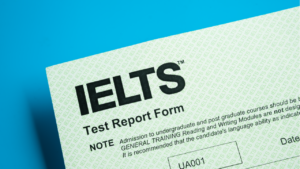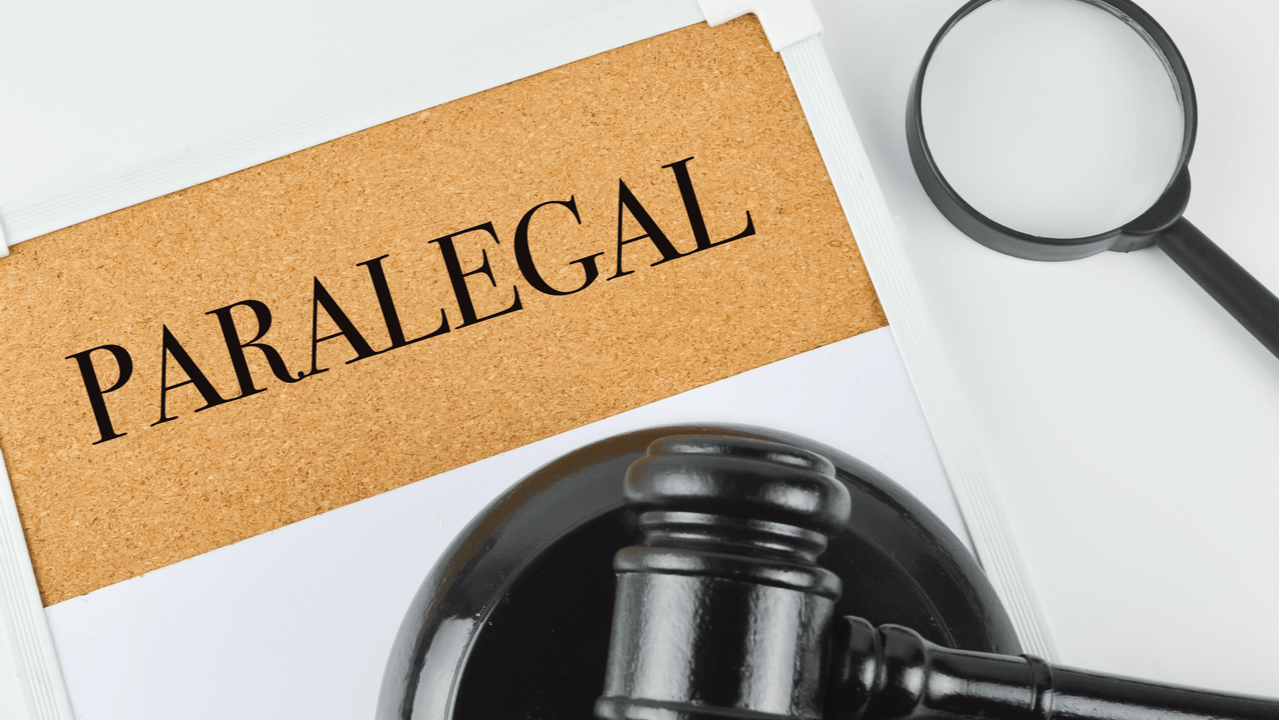IELTS is one of the most famous English language proficiency tests worldwide. Many organisations, institutions, and popular countries like Canada, the USA, the UK, and New Zealand accept it. Last year, over three million people took the exam.
It includes 4 modules, namely,
The IELTS Speaking Test is a crucial part of the IELTS Exam. It tests your ability to converse fluently in English. It comprises 3 parts: Introduction and Interview, Cue Card Round, and Long Discussion.
One of the tasks you will encounter during your IELTS Speaking Test is the Cue Card Segment. The topics test your communication skills. This part needs to have a clear, concise and well-thought-out answer.
To better understand the IELTS Speaking test, look at “Describe a historical place” and learn ways to present this section in the best way possible.
Leap Advantage Virtual Spot Offer Event on May 10th 2024

Last call to secure your spot for Masters in US for Fall ’24 Intake
Leap Advantage Virtual Spot Offer Event on May 10th 2024
Last call to secure your spot for Masters in US for Fall ’24 Intake

IELTS Speaking Test
The International English Language Testing System (IELTS) is a standardised test that measures the English proficiency of non-native speakers. Among the 4 modules, the Speaking section is the most interactive and personal.
The Speaking Test is about 11 to 14 minutes long. It consists of three parts, each designed to assess different aspects of your speaking skills.
The Three speaking sections are:
| Part 1– Introduction and Interview: The examiner will ask general questions about yourself, your family, work, likes, dislikes and more. Part 2– Cue Card Segment: In this part, you will be given a topic to speak on and will have a minute to prepare for it. Then, you will speak about it for 2 minutes. Part 3– Long Discussion: The examiner will ask you follow-up questions related to the topic discussed in Part 2 |
Now, let us dive into the IELTS Speaking Part 2.
IELTS Speaking Part 2: Cue Card
Part 2 of the IELTS Speaking Test is the Cue Card or the Talk section. The Cue Card is a crucial part of the IELTS Speaking exam, usually in the middle of the exam.
It tests your ability to speak fluently on a topic and organise your thoughts effectively. The Cue Card round is allotted 3-4 minutes of speaking time, and the examiner will give you a cue card with a topic.
Total Duration of IELTS Speaking Part 2
| Duration of IELTS Speaking Part 2 | 3-4 minutes |
| Preparation Time | 1 minute |
| Speaking Time | 2-3 minutes |
You will have one minute to prepare your notes and two minutes to discuss the topic. Use your preparation time wisely and jot down key points you want to cover in your speech. You can use abbreviations or short forms to save time, but ensure you can understand them later.
When the two minutes are up, the examiner will ask you one or two follow-up questions about the topic. This is your chance to showcase your ability to express your perspectives and ideas in more detail and to provide examples and details to support them.
Crack IELTS Exam in first attempt

Attend Leap’s free masterclass to get tips, tricks and advance strategies to crack IELTS exam in first attempt
Crack IELTS Exam in first attempt
Attend Leap’s free masterclass to get tips, tricks and advance strategies to crack IELTS exam in first attempt

Describe a Historical Period: Model Answers
To ace your IELTS Speaking Test, it’s essential to familiarise yourself with the format of the exam and the topics, such as how to describe a historical period. Here are a few points that you include to curate the best answer for the topic.
1) Select a historical period you know well
This will help you give a more accurate and authentic answer. You can start by providing a brief overview of the historical period, which will help you set the context for the rest of your answer.
2) Talk about the key points and the main events of the historical period.
This will showcase your knowledge of the period and make your answer more attractive. You can also provide the impact of these events on the society and culture.
Moreover, you should also mention the important people who played a role during the historical period.
3) Describe the cultural and social changes that occurred during the period.
This could include changes in art, literature, music, fashion, and other aspects of culture. You can also mention the impact of these changes on society and how they continue to influence us today.
4) Conclude by mentioning your personal opinion.
This will show the examiner that you understand the period beyond just the facts. You can mention what you find interesting about the period, what you have learned, and how it has influenced your perspective.
Here are two answers to help you.
Describe a Historical Period: Model Answer 1
Introduction
The Industrial Revolution began in the late 18th century and continued till the 19th century. It saw a significant shift in how goods were produced and distributed. Before the Industrial Revolution, most goods were handmade in small shops or homes.
After new technologies like the steam engine and the spinning jenny were founded, factories began to emerge. These enabled the production of goods on a larger scale.
Features of the historical period
An essential aspect of the Revolution was the rise of capitalism as a dominant economic system. After the growth of factories and mass production, goods could now be produced more efficiently and affordably.
This all led to a vast consumer demand, which fueled the development of new industries and businesses.
However, due to the rise of capitalism, there was significant economic and social inequality as the advantages did not reach the society evenly.
Changes occurred during the historical period.
The Industrial Revolution impacted our society and significantly changed how people lived, worked and talked to each other. For instance, the growth of factories led to urban centres where workers could work and live together.
These changes led to new social and cultural norms as people from different backgrounds and regions came together in these centres.
Conclusion
The Industrial Revolution led to the growth of cities and a rise in living standards for many individuals. The development of factories and technologies like the steam engine increased pollution and environmental degradation, negatively affecting health.
Describe a Historical period: Model Answer 2
Introduction
One such fascinating historical period that I would like to talk about is the Indus Valley Civilization. The Indus Valley Civilization flourished around 3300-1300 BCE and is one of the world’s oldest and most advanced civilisations.
It is also known as the Harappan Valley Civilization. This civilisation flourished around the fertile Indus River plains, modern-day Pakistan, and northwest India.
Features of the Historical Period
The most remarkable feature of this civilisation is its well-planned cities like the Mohenjo Daro and Harappa.
These cities had well-defined drainage systems, streets, and multi-story buildings showcasing high architectural knowledge.
The Indus Valley people were active traders; their economic system was supported by agriculture, trade, and various crafts.
Changes that occurred during the historical period.
The Harappan cities were built using standardised baked bricks and gave the structure of two and multi-story buildings.
People learn about the grid layout, well-organised street structures, and advanced drainage systems.
These people were highly skilled in agriculture and used irrigation systems. They cultivated various crops, including wheat, rice, barley, fruits, and vegetables.
The Harappan people were well-crafted artists, producing pottery, jewellery, statues, and even seals that were used for trade.
Conclusion
The Indus Valley Civilization represents the achievements of the early human civilisations. The infrastructure advancements and city planning make it a compelling subject to study.
Describe a historical period: Follow-up Questions
The follow-up questions are the third part of the speaking test, where the examiner asks you follow-up questions on the topic you discussed in part 2, that is, to describe a historical period.
When answering these follow-up questions, be sure to draw on the information you provided in your initial description of the historical period. Use specific examples to support your answers, and try to make connections between different aspects of the period. This will demonstrate your knowledge of the topic and ability to communicate effectively in English.
Some common follow-up questions that you may encounter on the topic:
Q. Do you think children are more interested in learning about history nowadays?
Answer A: No, I don’t think so. Children are reluctant to learn about their past despite the availability and easy access to several sources and materials, including books, museums, the Internet, and movies. For most of them, the subject seems boring.
Answer B: With the introduction of experiential teaching methods and curriculum upgradation, children’s interest in the subject is significantly increasing. In addition, including activities such as museum visits, interactive projects, and historical reenactments has made the issue more engaging and enjoyable.
Q. As per you, what sources can people get reliable historical information?
Answer A: People can get the most accurate information from the books written by prominent historians by visiting art galleries and museums. Apart from these, many reliable websites with authentic details are available online.
Answer B: There are a lot of sources available that people can refer to, like academic journals and theses, by visiting archives and national libraries, watching documentaries and films, and through historical societies designed explicitly with the motive of preserving history.
Q. Do you think it is necessary to know about history?
Answer A: it is essential because history teaches us about our past. We learn about many things: our ancestors, our evolution, how we have won freedom, and many other things. History teaches us to learn from our mistakes and makes us aware of our progress.
Answer B: Yes, the knowledge of history is of the utmost value for understanding the roots of our culture, society, and political development. This knowledge provides us with the context of current events and allows us to learn from past experiences to make informed decisions.
Q. Do you think museum entry should be free?
Answer A: No, museums should not charge an entry fee. Museums require proper maintenance to function. Hence, a minimum price should be set to take appropriate care. Moreover, it is human tendency not to value things which come free of cost.
Answer B: I have to disagree with this. Making museum entry accessible will result in negative consequences. Museums rely on the money earned from ticket sales and donations for their operations, staff fees, and maintenance. Making entry free will make it difficult for museums to sustain.
Tips to Ace the IELTS Cue Card Task!
The IELTS Cue Card task, or Speaking Part 2, requires you to speak on a topic for 1-2 minutes. The key to success in the IELTS Cue Card task is a combination of language skills, organisation, and effective communication. Here are some tips to help you ace the IELTS Cue Card task:
- Regularly practice speaking on a variety of topics. Record yourself and listen to it to identify areas for improvement.
- Use a wide range of vocabulary to showcase your language skills and avoid repetition.
- Ensure you speak about all the points in the cue card within the allotted time.
- Structure your response by starting with a clear introduction. Then, moving on to the main points and concluding sentences.
- Your sentences should be grammatically correct, and your pronunciation should be accurate.
- Use the preparation time wisely and note points to help frame your answer.
- Give long answers and expand on your ideas with relevant examples.
- Maintain a positive attitude and be confident in your answers.
Following these tips can improve your performance and help you aim to score a higher band. Remember to practice regularly and constantly check on your performance.
Need more help? Sign up for our IELTS Masterclass and get access to expert training, mock tests, IELTS resources, speaking evaluations and more!
Also Read
Describe A Cafe You Like To Visit
Describe a Long Car Journey You Went on
Describe a Time When You Observed the Stars
Describe a Difficult Thing You Did
Frequently Asked Questions
-
Q. What are the three parts of the IELTS Speaking Test?
A. The IELTS Speaking test has three parts. The three parts are as follows:
Introduction and Interview: In this part, you must answer questions about yourself and your family.
Cue Card Round: You will have to speak about a given topic, which will be assigned to you by the examiner on the spot.
Long Discussion: In this part, a more extended discussion between you and the examiner will occur about the topic you have spoken about in part 2. -
Q. What are the four components of IELTS speaking?
A. The performance of the IELTS speaking test is awarded a score band based on four equal weightage criteria. Your performance will be scored on four parameters: Fluency and coherence, Lexical Resources, Grammatical range, Accuracy, and pronunciation.
-
Q. How many types of cue cards are there in IELTS?
A. There are many types of cue cards in the IELTS. Some of them are as follows:
Describe an event in the past
Describe a person.
Describe a habit
Describe an object.
Describe a place. -
Q. How can I avoid pauses in IELTS speaking?
A. You must perform efficiently in the IELTS speaking test to secure good bands. Here are a few tips to avoid pauses during a test:
● Speak your mind instead of speaking preconceived answers.
● Put your thoughts out with a clear opinion and firmly.
● Speak slowly but with a firm voice.
● Utilise natural passes effectively to avoid errors.
● Use linking words as much as possible to appear thoughtful. -
Q. What is the duration of the IELTS Speaking Test?
A. The IELTS Speaking Test usually takes 11-14 minutes to complete. A face-to-face interview with a certified examiner is designed to assess your ability to communicate in English. The test is divided into three parts, with the first part being an introduction and interview, the second part being a short speech, and the third part being a discussion. The test is scored on a scale of 0 to 9, with 9 being the highest score.
-
Q. Can I pause during the IELTS speaking?
A. Yes, natural pauses are acceptable. But remember, these pauses should be at most two seconds and filled with fillers such as, Well, Okay, Like, So. This comes naturally while casually speaking. However, you may feel under pressure while speaking in front of an examiner, so you need to remember to talk cohesively in such a situation. These poses while practising your speech will save you from these trivial mistakes.
-
Q. How is the speaking test scheduled in IELTS?
A. If you have applied for paper-based IELTS, the speaking test will be held seven days before or seven days after the scheduled examination. But if you have opted for a computer-based test, the speaking test will be held on the same day, before or after the writing, reading and listening tests. You can choose how you want to appear for the test.
-
Q. Can I retake only a single module in IELTS?
A. Yes, you can retake only a specific section of the IELTS exam with the help of the IELTS One Skill Retake test. Using this, you can save time to appear again for all four areas and even increase your scores in a particular part of the exam. However, you can only apply once for the IELTS one Skill Retake.
-
Q. Can I use informal language in the IELTS Speaking Test?
A. Using informal language in the IELTS Speaking Test is not recommended. The test assesses your ability to speak fluently and accurately in English, requiring formal language. Using informal language may negatively impact your score. It’s best to use standard English and avoid slang.
-
Q. What are some valuable tips for the IELTS Speaking Test?
A. To perform well in the IELTS Speaking Test, practice speaking English regularly, familiarise yourself with the test format, and learn to manage your time effectively. Moreover, try to speak confidently and fluently, use a wide variety of vocabulary, and don’t be afraid to express your opinions. Finally, ensure you listen carefully to the examiner’s questions and answer them accurately.
-
Q. Is Speaking the same for Academic and General?
A. The Speaking section of the IELTS test is the same for both Academic and General Training modules. However, the topics and questions may differ slightly based on the module you are taking. For example, the Academic module may have more technical or scientific topics, while the General Training module may have more everyday topics. Nevertheless, the Speaking section’s format, timing, and scoring criteria remain the same for both modules.







